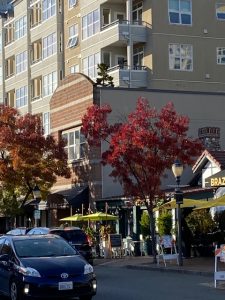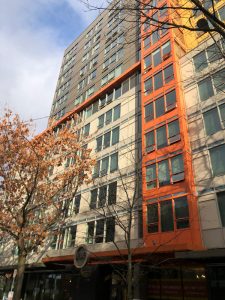Seattle Metropolitan District Apartment Market Study

Way back in February of 2020, the world and our apartment market looked vastly different than today. The Seattle metropolitan region’s apartment market had finally reached a point of equilibrium. Supply equaled demand, vacancy rates were stable at 3.8%, rent growth quietened down to 2% to 3%, everything looked great.
That did not last long. We have seen Metro region apartment demand drop from 9,428 units to 1,781 units for 2020. Metro wide vacancies increased from 3.8% as of January 2020 to 4.1% which does not sound bad until one realizes that Seattle’s vacancy rate went from 3.7% to 5.2% in six months.
Metro wide vacancies went from 2.8% in June 2019 to 4.1% as of June 2020. During the same time frame Seattle’s vacancies increased from 2.8% to 5.2%.
Concessions
Concessions increased dramatically. Typical concessions in Seattle went from two weeks free rent to two months free rent. Concessions were really the shock absorber for this market. Supply was up and demand was down. So, property managers do what they need to do, offer concessions, sometimes big concessions. The size and significance of the concessions were dependent upon submarket and how many new units were trying to lease. Most of the really big concessions were in new buildings leasing up, but often the relatively new buildings nearby had to match the concessions.
Metro Market
The Metro market actually absorbed 3,978 new units between January and June of 2020. That would be considered fairly good and not too far off of what would be expected. The problem is that vacancies increased by 1,954 units, indicating a net absorption of 2,024 units over six months, which is not as good as it may appear. Demand usually declines in the second half of the year. We expect to see a Metro wide net apartment demand in 2020 of 1,781 units. This means that we expect the metro market to have a slightly negative (almost neutral) demand figures in the second half of 2020.
The issue is that the supply pipeline was full just as the COVID-19 hit the economy. We had about 7,435 units expected to come online as of the beginning of the year. Of course, most of those units were delayed due to the lockdown of the economy. Now we have 13,089 units under construction, of which 3,859 units are expected to hit in 2020, and 7,363 units coming online in 2021.
Given the substantial disruption to the economy, households, and personal income over the first six months of the year, we are surprised to see that the market is not in worse condition. Of course, if unemployment remains high and there is no more stimulus or extended unemployment benefits, then perhaps the apartment market still has an element of risk that needs to be considered.
Our forecast does not factor in the possible loss of significant household incomes and the resulting fallout due to lack of unemployment benefits.
Our Metro region forecast expects the market in 2020 to continue to experience distress. Vacancies are expected to rise from a mid-year rate of 4.1% to 4.9% by year end. Not terrible. Then over 2021, we expect demand to rebound to a more typical level of demand, but vacancies are expected to increase to 5.0% in January of 2020 and then fluctuate around 5.0% to 5.2% for the next two years.

The more interesting story in what is happening in the Seattle sub-market and what we expect to happen over the next two years. Vacancies in the Seattle sub-market are now about 5.2% and are expected to climb to 6.2% by January of 2021, and then hold constant around 6.3% to 6.5% till the third quarter of 2022. This means rents will be flat and concessions will likely continue for a while.
The Eastside
The Eastside is expected to do slightly better than Seattle. Current Eastside vacancies are 4.6% and will likely increase to 5.7% by the beginning of 2021 and then hold around that level throughout 2021. Then, vacancies are expected to decline by the beginning of 2022 and will likely continue to decline as demand rebounds and supply tapers off.
The Southend
The Southend market has been the major beneficiary of Seattle’s and the Eastside’s loss. Southend vacancies have declined dramatically from 4.2% in January of 2020 to 2.7% by June. The Southend had a net demand of 1,879 units during the first six months of 2020. The vacancy level is expected to remain in the 3.5% range though to 2022. The Southend market appears to be extremely stable. This is really due to such low levels of new supply that even with relatively low demand levels, vacancies are expected to remain low and stable.

Snohomish County
The Snohomish County market reported a vacancy level of 3.4% as of June 2020. This is an improvement since January 2020 when vacancies were reported at 4.0%. Looking forward, we expect to see Snohomish County vacancies to hold very steady at about 3.5%.
It certainly does appear that demand increased in more suburban and more affordable markets and declined in the central core markets where rents are higher. Is this an effect of the new work from home (WFH) trend? The entire WFH movement is a subject unto itself. But I will say it appears that perhaps as many as 30% of white-collar office workers may now be permanent tele-commuters.
Our forecast calls for the Metro wide vacancy rate to climb from 4.5% as of June 2020, to about 5.0% by June of 2021 and rising slightly to 5.2% early in 2022. Really not so bad.
The Seattle sub-market is where the rubber hits the road because Seattle has most of the new supply coming online. Vacancies are expected to increase from 5.2% as of June 2020 to 6.2% by June of 2021 and 6.5% by January of 2022, then vacancies will start to decline. We see 6.2% by September of 2022.
Eastside Market
The Eastside market is in better shape, but not by much. June 2020 vacancy was 3.9%, but is expected to increase to 5.4% by year end 2020. By June of 2021, we expect vacancies to be about 5.6% and then hover at the level until September 2022 when vacancies start to decline to about 5.0%.
Southend Market
The Southend market is in good shape. June vacancies were 2.7% but are expected to increase to 3.6% by the end of 2020. By June of 2021, we should see vacancies at about 3.5% and then start a slow and modest decline to 3.2% by September of 2022. This pattern will likely allow for modest rents increases.
Snohomish County Market
The Snohomish County market is in similar shape as the Southend. June 2020 vacancies were 3.4% and due to low levels of anticipated supply, and we expect to see vacancies remain around 3.5% till September of 2022. Stable is the expectation. Modest rent growth can be expected.
Seattle Metro Region
The Seattle metro region is fortunate in that we have an extraordinarily strong tech sector. This tech sector will clearly be the driver of the rebound in employment and will likely continue to add more employment growth, especially in Bellevue. The apartment market may experience a two-year period of more modest rent growth until employment levels rebound and net migration returns in earnest. Whenever the Seattle region has had strong immigration, we have had a strong apartment market. We expect to see strong population growth resulting in strong household growth which will drive the demand for apartments. While many young households are now moving into the home buying years, there will be new young people migrating to the region and 60% of them will chose an apartment.
